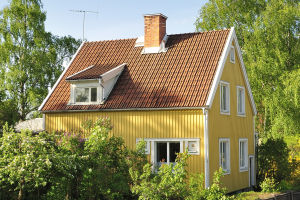Natural disasters are natural phenomena that we cannot avoid.
However, when building high-rise buildings, we can take a series of preventive measures to reduce the impact of natural disasters on buildings and residents.
Here are some suggestions to help prevent natural disasters in tall buildings.
First of all, for high-rise buildings, the most important thing is the seismic design. Earthquakes are one of the main factors causing building collapse and damage. Therefore, in the architectural design stage, the possibility of seismic activity must be considered and corresponding measures taken.
This includes using high-strength building materials, providing strong support structures, increasing the stability of buildings, and ensuring that buildings can withstand the forces generated by earthquakes.
Second, fire safety is another crucial aspect of high-rise buildings. Fires often spread rapidly in high-rise buildings, causing huge damage and loss of life and property. To prevent fires, buildings should be equipped with advanced fire detection and alarm systems, as well as automatic sprinkler systems.
In addition, the escape routes and emergency exits of buildings should be fully considered and planned to ensure that people can evacuate quickly and safely in the event of a fire.
Third, windstorms are another type of natural disaster that needs to be prevented. In high-rise buildings, strong winds can cause damage and even collapse of the building.
In order to prevent wind damage, strong materials should be used for the external structure of the building, and proper wind tunnel testing should be carried out to ensure the stability of the building under strong winds. In addition, the windows and doors of the building should have adequate wind protection measures, such as the use of tempered glass and storm doors, to prevent windows from shattering and doors from being blown open by the wind.
In addition, floods and typhoons are also natural disasters that need to be considered. High-rise buildings should be located on elevated ground or on elevated foundations to reduce the impact of flooding.
In addition, the sewer system and drainage system of the building should be designed reasonably and should be inspected and maintained regularly to ensure unimpeded flow. For typhoons, the exterior walls and roofs of buildings should have sufficient wind resistance to reduce the impact of wind on buildings.
Also in high-rise buildings, it is very important to establish a good lightning protection system. This includes installing lightning rods and grounding systems to channel lightning strikes into the ground and avoid damage to buildings and residents.
Creating greenery and ecosystems around high-rise buildings can help mitigate the effects of natural disasters. Vegetation reduces the risk of soil erosion and landslides and absorbs rainwater and reduces the threat of flooding. In addition, greenery can also provide wind protection, cooling, and air quality improvement effects.
Building community awareness of natural hazards and emergency preparedness is important. Residents should know how to take appropriate action in the event of a disaster and know how to use escape routes and emergency facilities. Additionally, regular disaster drills and training can improve residents' resilience.
Finally, high-rise buildings should undergo regular safety inspections and maintenance in response to natural disasters. This includes regular inspections of building structures, electrical systems, fire protection, etc. to ensure their proper functioning and safety.
In addition, it is also important to train building managers and residents in disaster response skills to improve their ability to respond in the event of a natural disaster.
Prevention of natural disasters is of paramount importance when building high-rise buildings. Through earthquake-resistant design, fire safety, wind disaster prevention, flood, and typhoon protection measures, and regular inspection and maintenance, we can minimize the impact of natural disasters on high-rise buildings and ensure the stability of buildings and the safety of residents.


